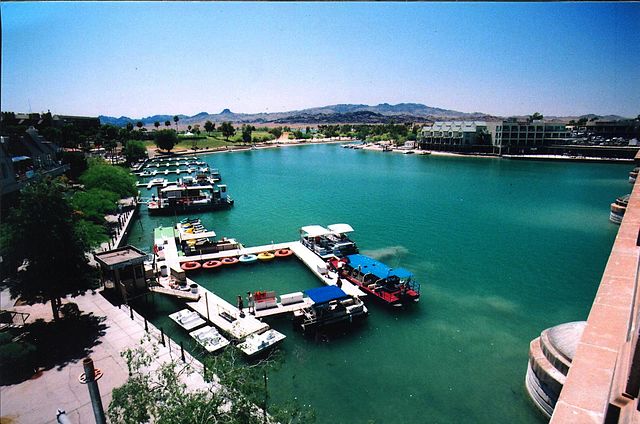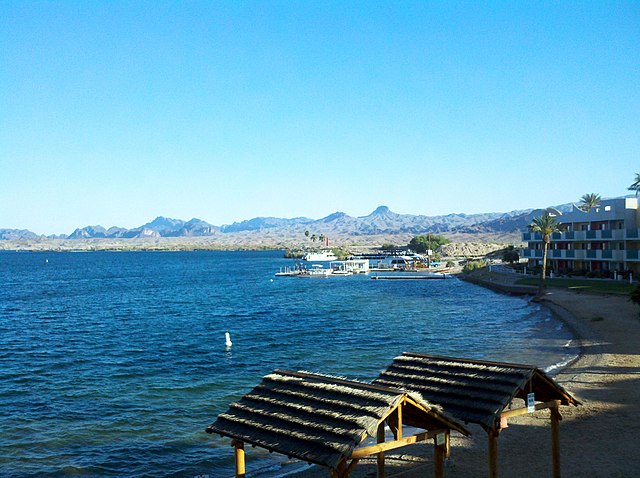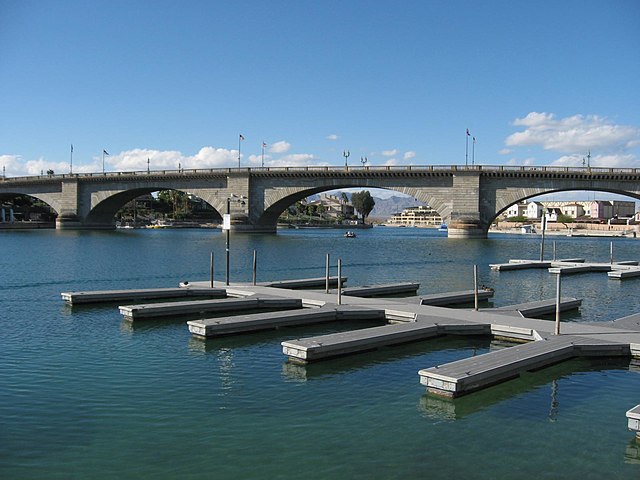When you think of perfect weather destinations, Lake Havasu City probably doesn’t immediately spring to mind. But here’s the thing – this Arizona gem boasts some of the most predictable and enjoyable weather patterns in the Southwest. Whether you’re planning a vacation, considering a move, or just curious about what makes this desert oasis tick, understanding Lake Havasu City’s weather is your ticket to making the most of everything this unique destination has to offer.
What Makes Lake Havasu City’s Weather So Special?
Lake Havasu City sits in a unique geographical sweet spot that creates its distinctive climate. Located in the Sonoran Desert of western Arizona, this city enjoys over 300 days of sunshine annually. But what really sets it apart from other desert locations?
Desert Climate Characteristics
The desert climate here isn’t just about blazing heat and tumbleweeds rolling down empty streets. Lake Havasu City experiences what meteorologists call a “hot desert climate” with some fascinating twists. The city receives minimal rainfall – typically less than 4 inches per year – making it one of the driest places in North America.
This arid environment means you’ll experience low humidity levels year-round, which makes even the hottest days more bearable than you might expect. Ever notice how 90 degrees in Florida feels completely different from 90 degrees in Arizona? That’s the magic of low humidity at work.
The Role of Lake Havasu in Local Weather
Here’s where things get interesting. Lake Havasu itself acts as a massive natural air conditioner, creating microclimates that moderate temperatures along the shoreline. The lake’s 45-mile length and 19,000 surface acres of water provide cooling effects that can drop temperatures by 5-10 degrees compared to areas just a few miles inland.
This cooling effect is most noticeable during summer evenings when the lake releases stored heat more slowly than the surrounding desert floor. It’s like having nature’s own climate control system right in your backyard.
Seasonal Weather Patterns in Lake Havasu City

Understanding the seasonal rhythms of Lake Havasu City weather helps you plan everything from weekend getaways to major life decisions. Each season brings its own personality and unique advantages.
Spring Weather (March-May)
Spring in Lake Havasu City is nothing short of magical. This is when the desert comes alive, and the weather hits that perfect sweet spot that makes you want to spend every waking moment outdoors.
March Temperature Trends
March kicks off spring with daytime temperatures averaging in the comfortable 70s to low 80s Fahrenheit. Nighttime temperatures typically dip into the 50s, creating perfect conditions for camping, hiking, or simply enjoying evening strolls along the lake. You’ll want to pack layers during this time, as the temperature swings between day and night can be quite dramatic.
April’s Perfect Balance
April might just be the crown jewel of Lake Havasu City’s weather calendar. Daytime temperatures climb into the 80s and low 90s, while nights remain pleasantly cool in the 60s. This is prime time for outdoor activities, and you’ll find locals and visitors alike taking full advantage of the nearly perfect conditions.
May’s Warming Phase
As May progresses, you’ll notice summer starting to flex its muscles. Daytime highs begin reaching the mid-90s to low 100s, while nighttime temperatures settle into the comfortable 70s. This is your last chance to enjoy truly moderate weather before the summer heat takes center stage.
Summer Weather (June-August)
Summer in Lake Havasu City isn’t for the faint of heart, but it’s not the brutal ordeal many people imagine either. Yes, it gets hot – really hot – but the dry heat and strategic planning can make it quite manageable.
June’s Rising Heat
June serves as summer’s opening act, with temperatures climbing into the 100-105°F range during the day. But here’s the silver lining: nighttime temperatures in the 80s mean you can still enjoy evening activities on the lake. Early morning and late evening become your best friends during this time.
July and August: Peak Summer
These are the heavyweight champions of Lake Havasu City’s weather calendar. Daytime temperatures regularly soar above 110°F, and nighttime lows rarely drop below 85°F. But before you write off summer entirely, consider this: the lake becomes your personal oasis, offering countless ways to beat the heat while still enjoying the outdoors.
Fall Weather (September-November)
Fall weather in Lake Havasu City is like a slow, satisfying exhale after holding your breath all summer. The temperatures gradually ease back into comfortable ranges, making this another prime season for outdoor enthusiasts.
September’s Gradual Cooling
September still carries summer’s heat signature, with daytime temperatures in the 100-105°F range, but you’ll notice the nights becoming more comfortable as they drop into the 70s and 80s. This is when many locals start emerging from their air-conditioned hibernation.
October’s Golden Weather
October delivers some of the year’s most pleasant weather, with daytime temperatures settling into the 80s and 90s, and nighttime temperatures dropping into the 60s and 70s. This is another peak season for outdoor activities and tourism.
November’s Mild Transition
November brings mild, almost perfect weather with daytime temperatures in the 70s and 80s, and cool nights in the 50s and 60s. This is when snowbirds start arriving, and you’ll understand why once you experience these delightful conditions.
Winter Weather (December-February)
Winter in Lake Havasu City might challenge your preconceptions about desert weather. While it doesn’t involve snow boots and ice scrapers, it can actually get quite chilly – especially by desert standards.
December’s Mild Start
December brings mild, pleasant weather with daytime temperatures in the 60s and 70s, and nighttime temperatures that can dip into the 40s. You’ll need jackets and sweaters, but you can still enjoy outdoor activities comfortably.
January’s Coolest Period
January represents the coolest month in Lake Havasu City, with daytime temperatures averaging in the 60s and nighttime temperatures that can drop into the 30s. While snow is extremely rare, frost can occasionally occur on the coldest nights.
February’s Warming Trend
February begins the gradual warming trend that leads into spring. Daytime temperatures climb back into the 70s, while nighttime temperatures moderate into the 40s and 50s. This is when you’ll start feeling the promise of spring in the air.
Monthly Weather Breakdown

Understanding the month-by-month weather patterns helps you plan specific activities and visits with precision.
Temperature Averages by Month
Here’s what you can expect throughout the year:
January through March sees the coolest temperatures, with highs ranging from 65°F to 80°F and lows from 40°F to 55°F. This is when you’ll need your warmest clothes, but it’s still pleasant enough for most outdoor activities.
April through June brings the warming trend, with highs climbing from 85°F to 105°F and lows ranging from 60°F to 80°F. This transition period offers some of the year’s most comfortable weather.
July through September represents peak heat season, with highs regularly exceeding 110°F and lows rarely dropping below 80°F. This is when the lake becomes essential for staying cool and comfortable.
October through December shows the cooling trend, with highs dropping from 95°F to 70°F and lows ranging from 70°F to 45°F. This is another comfortable period that attracts many visitors.
Precipitation Patterns
Lake Havasu City’s precipitation patterns are as predictable as they are minimal. The city receives most of its limited rainfall during two distinct periods: winter storms from December through February, and summer monsoons from July through September.
Winter precipitation typically comes from Pacific storm systems and can occasionally bring light snow to the surrounding mountains. Summer precipitation arrives as brief but intense thunderstorms that can produce spectacular lightning displays over the lake.
Humidity Levels Throughout the Year
Humidity levels remain consistently low throughout the year, typically ranging from 20% to 40%. This low humidity is what makes even the hottest summer days more bearable than similar temperatures in more humid climates. During the brief monsoon season, humidity levels can spike temporarily, but they quickly return to normal as storms pass.
Best Times to Visit Lake Havasu City
Timing your visit to Lake Havasu City can make the difference between a good trip and an unforgettable one. Different seasons offer different advantages depending on what you’re looking for.
Peak Season vs. Off-Season
Peak season runs from October through April, when temperatures are most comfortable for outdoor activities. During this time, you’ll find perfect weather for hiking, boating, fishing, and exploring the area’s natural beauty. However, you’ll also encounter higher prices and larger crowds.
Off-season runs from May through September, when temperatures soar but prices drop significantly. If you can handle the heat and plan your activities strategically, you’ll find great deals on accommodations and fewer crowds at popular attractions.
Weather for Different Activities
Water sports enthusiasts will find the lake comfortable year-round, but summer offers the warmest water temperatures – perfect for swimming, water skiing, and jet skiing. The lake’s temperature ranges from about 60°F in winter to 85°F in summer.
Hiking and outdoor exploration are best enjoyed from October through April when temperatures are moderate. Summer hiking is possible but requires early morning starts and plenty of water.
Photography enthusiasts will find dramatic lighting conditions year-round, but spring and fall offer the most comfortable conditions for extended outdoor shoots.
Extreme Weather Events

While Lake Havasu City’s weather is generally predictable, extreme events do occasionally occur and are worth understanding.
Summer Heat Waves
During peak summer, temperatures can exceed 120°F for several consecutive days. These heat waves are serious business and require proper preparation and respect. The key is staying hydrated, seeking shade during peak hours, and limiting outdoor activities to early morning or late evening.
Winter Cold Snaps
Occasionally, Arctic air masses can push temperatures below freezing for brief periods. While snow is extremely rare in the city itself, the surrounding mountains may receive light dustings that create beautiful scenery.
Monsoon Season Impact
Summer monsoons can bring sudden, intense thunderstorms with heavy rain, lightning, and occasionally small hail. These storms are typically brief but can create dangerous flash flood conditions in washes and low-lying areas.
How to Prepare for Lake Havasu City Weather
Successful weather preparation in Lake Havasu City comes down to understanding the extremes and planning accordingly.
Summer Survival Tips
Summer preparation starts with accepting that you’ll be dealing with extreme heat. Invest in high-quality sunscreen, wide-brimmed hats, and lightweight, light-colored clothing. Plan outdoor activities for early morning or late evening hours, and always carry more water than you think you’ll need.
Air conditioning becomes essential during summer months, so ensure your accommodations are properly equipped. If you’re camping, consider sites with electrical hookups for fans or small air conditioning units.
Winter Comfort Strategies
Winter preparation involves layering strategies since temperatures can vary dramatically between day and night. Pack warm jackets, long pants, and closed-toe shoes, but also include lighter options for warmer daytime temperatures.
Don’t forget that winter is actually an excellent time for outdoor activities, so bring appropriate gear for hiking, biking, and lake activities.
Weather’s Impact on Local Activities
Lake Havasu City’s weather directly influences the rhythm of local life and recreational activities throughout the year.
Water Sports and Recreation
The lake remains the centerpiece of recreation year-round, but activities shift with the seasons. Summer brings peak boating and water skiing conditions, while winter offers excellent fishing opportunities with fewer crowds.
Spring and fall provide ideal conditions for all water sports, with comfortable air temperatures and pleasant water conditions. These seasons also offer the best photography opportunities with dramatic desert lighting.
Outdoor Events and Festivals
Most major outdoor events are scheduled during the comfortable months of October through April. This includes everything from car shows and music festivals to outdoor markets and sporting events.
Summer events typically focus on water-based activities or are scheduled for early morning or evening hours when temperatures are more manageable.
Climate Change and Future Trends
Like many desert regions, Lake Havasu City is experiencing gradual changes in its weather patterns. Average temperatures have increased slightly over the past several decades, and extreme heat events are becoming more frequent.
These changes are subtle but worth considering for long-term planning, whether you’re thinking about relocating or making significant outdoor investments. The city continues to adapt its infrastructure and services to accommodate these evolving conditions.
Conclusion
Lake Havasu City’s weather offers something for everyone, whether you’re a sun worshipper who can’t get enough of desert heat or someone who prefers the mild temperatures of winter months. The key to enjoying this desert paradise lies in understanding and respecting its weather patterns while taking advantage of the unique opportunities each season provides.
From the perfect spring mornings to the dramatic summer thunderstorms, from the comfortable fall afternoons to the crisp winter evenings, Lake Havasu City’s weather creates a year-round destination that rewards those who come prepared. The city’s 300+ days of sunshine aren’t just a statistic – they’re an invitation to experience outdoor recreation, natural beauty, and desert tranquility in one of America’s most unique settings.
Whether you’re planning a weekend getaway or considering a permanent move, Lake Havasu City’s weather patterns offer the predictability and variety that make this desert oasis truly special. Just remember to pack accordingly, stay hydrated, and prepare to be amazed by what this remarkable climate has to offer.
Frequently Asked Questions
Q: What is the hottest month in Lake Havasu City?
A: July is typically the hottest month in Lake Havasu City, with average high temperatures reaching 115°F and sometimes exceeding 120°F. August runs a close second, with similar temperature ranges that make these the peak summer months.
Q: Does it ever snow in Lake Havasu City?
A: Snow is extremely rare in Lake Havasu City itself, occurring perhaps once every 10-20 years and usually melting quickly. However, the surrounding mountains may receive light snow during winter cold snaps, creating beautiful scenery while the city remains snow-free.
Q: When is the best time to visit Lake Havasu City for comfortable weather?
A: The most comfortable weather occurs from October through April, with March, April, October, and November offering the most pleasant conditions. During these months, you’ll enjoy daytime temperatures in the 70s to 90s with cool, comfortable nights.
Q: How much rainfall does Lake Havasu City receive annually?
A: Lake Havasu City receives very little rainfall, typically less than 4 inches per year. Most precipitation occurs during winter months from Pacific storm systems and during summer monsoon season, which brings brief but intense thunderstorms.
Q: Is the summer heat in Lake Havasu City manageable for outdoor activities?
A: Summer heat is manageable with proper preparation and timing. The key is scheduling outdoor activities for early morning or late evening hours, staying well-hydrated, and taking advantage of the lake for cooling off. Many residents and visitors successfully enjoy summer activities by adapting their schedules to the climate.
